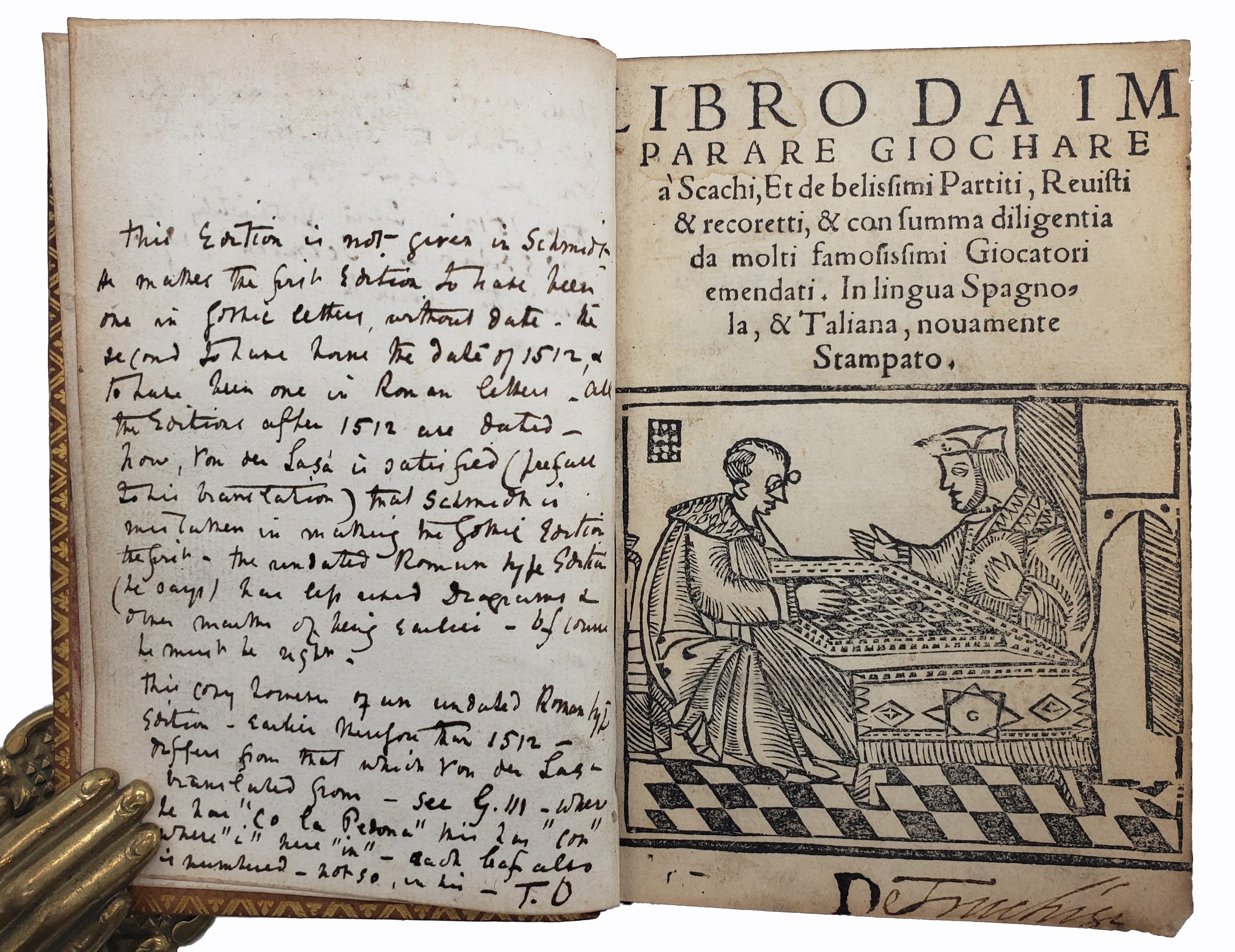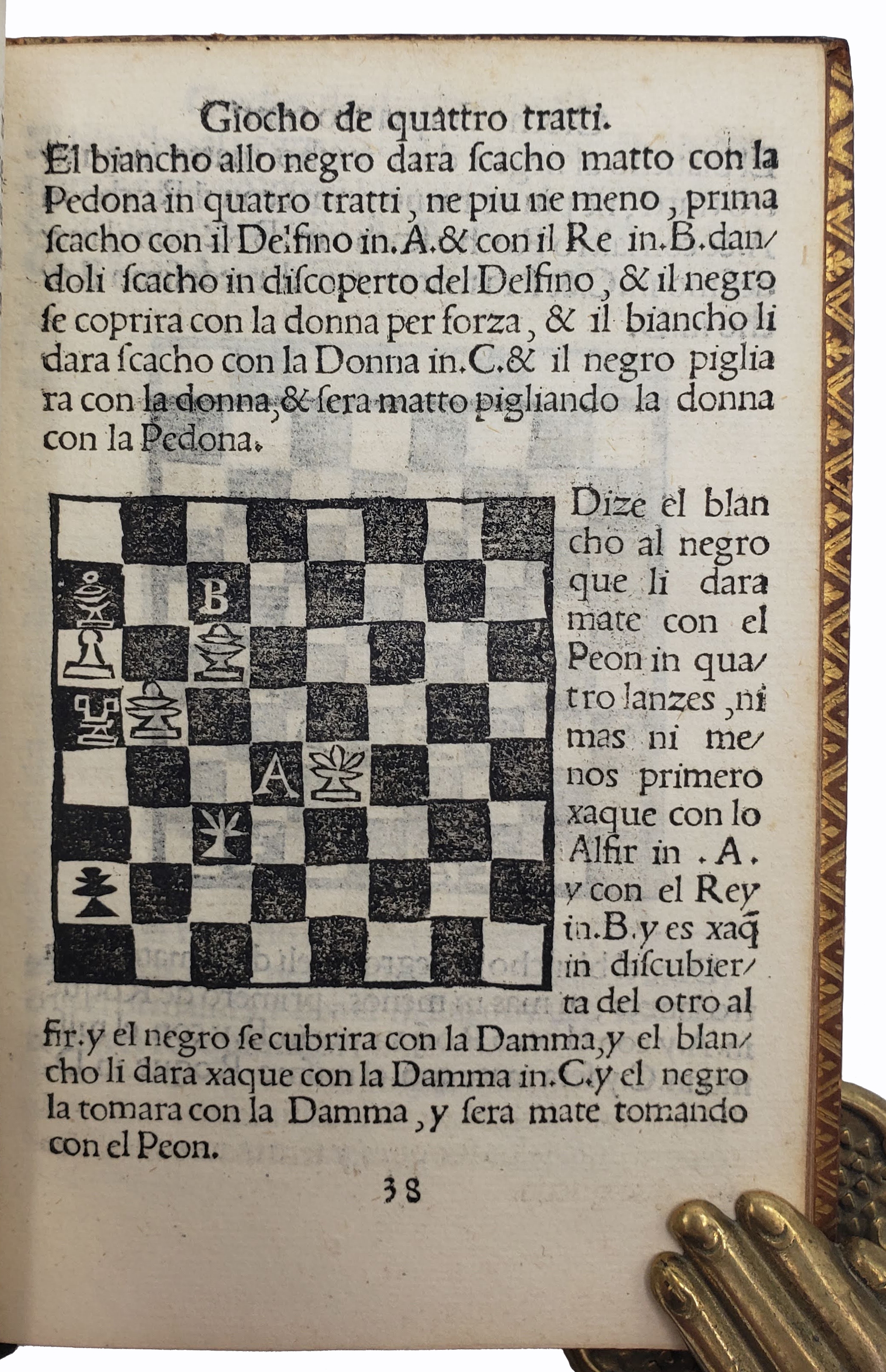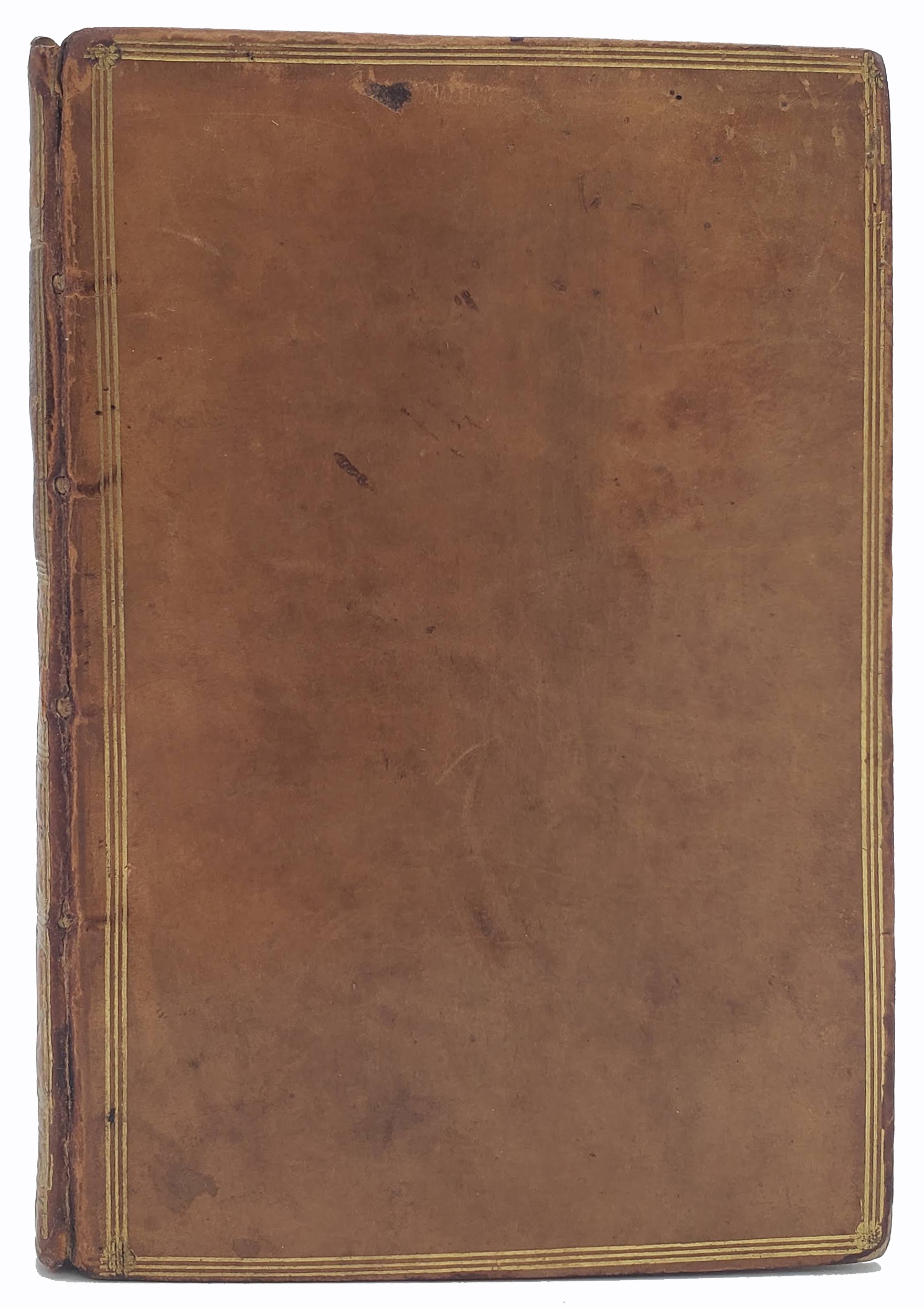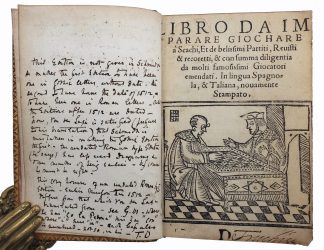DAMIANO DA ODEMIRA.
VERY RARE EARLY CHESS
Libro da imparare giochare a scachi.
n.pl., n.pr., n.d. [Venice or Rome], n.pr., n.d. [1524].£27,500.00
8vo. ff. 64. Watermark: PB within pot (?) surmounted by cross. Roman letter. Charming title woodcut with two men playing chess (a prince and a scholar?), 6 small woodcuts of chess pieces, 92 woodcut chessboards, all in fine, strong impression, illustrating playing techniques and problems, decorated initials. T-p a bit yellowed, small oil spot to next two ll. A very good copy in C18 polished calf, triple gilt ruled, spine gilt, wear at head, gilt-lettered label, inner edges gilt, marbled eps. Early C19 armorial bookplate of Rev. George Innes, College, Warwick to front pastedown, autograph J.W. Rimington Wilson and ms ‘Chess Library’ to rear front fep, his bibliographical notes to fly, C17 ms ex-libris ‘De Franchis’ to title, same autograph and another, contemporary ‘Pi Giulio (?) Santi(?)’ (crossed-out) to last verso.
Extremely rare, beautifully illustrated early chess book in Spanish and Italian – ‘the first chess book published in Italy’ (Hooper, p.85). This is one of the earliest editions and the first to include depictions of the individual chess pieces in the initial list (cf. Van der Linde). In particular, ‘the modern form of the Rook as tower’ first appears in this ed. (Murray, p.772).
Pedro Damiano da Odemira was a Portuguese apothecary and chess player, of whom little is known. He first published his chess book in 1512. It is renowned for maxims such as ‘If you have a good move, check if there is a better one’, and an early mention that each player should have a light square on the right-hand side. Damiano’s is only the third early chess book – following Vicent’s and Lucerna’s – written after the change of rules in 1475, when the Queen and Bishop appeared instead of the Fers and Aufin. This also led to the study of openings, and generally ‘most of the endgame knowledge garnered in the preceding 800 or 900 years [had become] obsolete’ (Hooper, p.145).
The 10 chapters discuss the names of chess pieces and universal regulations; the following – all illustrated, and bilingual – deal with playing techniques, focusing on the pawn and the knight, the last is devoted to playing blind-fold, with techniques to remember the location of each piece on the board. ‘Damiano declares there are only two ways of commencing the game […]. Under the first method he includes variations of the Petroff, the gambit now called after him, and the Giuoco Piano. The second method is The Queen’s Gambit accepted. […] His reputation during the 300 years following his death rested not on his analysis but upon his collection of problems’ (Murray, p.788). Albeit known as ‘Damiano Defence’, this move was actually criticised by Damiano as weak. A most interesting work in a wonderful copy.
The library of English chess player J.W. Rimington Wilson (1822-77), rich with rarities, was sold after his death. Rev. George Innes was head of Warwick School from 1792, for 50 years.
The bibliographical history is complicated. It was first published in 1512 (cf. Van der Linde), an ed. absent in USTC, which features instead one from 1518. It was republished a few times in 1520-40, mostly in 8vo, undated and without imprint. No prority has been established. All these early eds survive in 1-2 copies only. Palau lists this as the third; Sander calls this the fifth ed. and dates it after 1524, after Van der Linde, based on wear to the woodcuts.
LC and UCLA copies recorded in the US. Sander no. 2295 (fifth edition); Van der Linde I, p. 341; Palau 68221 (‘Libro preciso e muy popular en el siglo XVI’; USTC 5044951 or 825396 or 351615; EDIT16 CNCE 50103 or 75900. D. Hooper et al. eds, The Oxford Companion to Chess (1984); H.J.R. Murray, A History of Chess (1913).In stock





